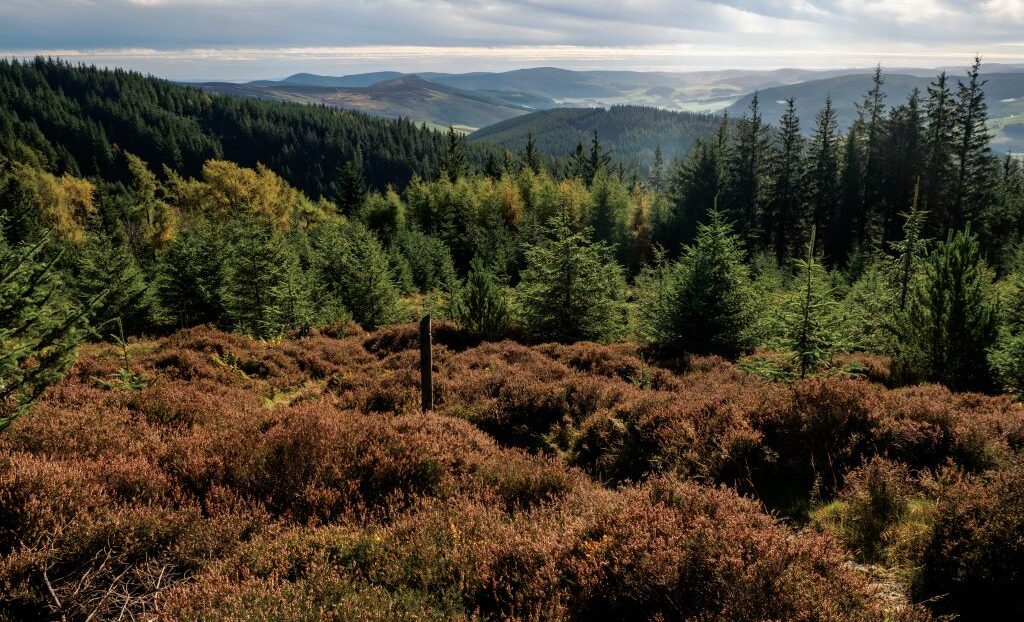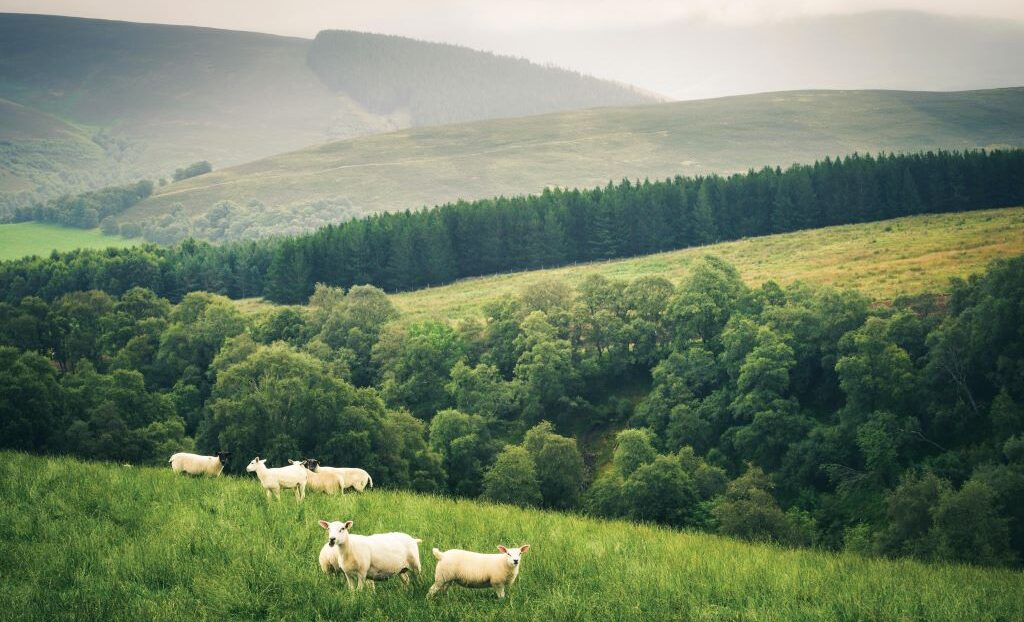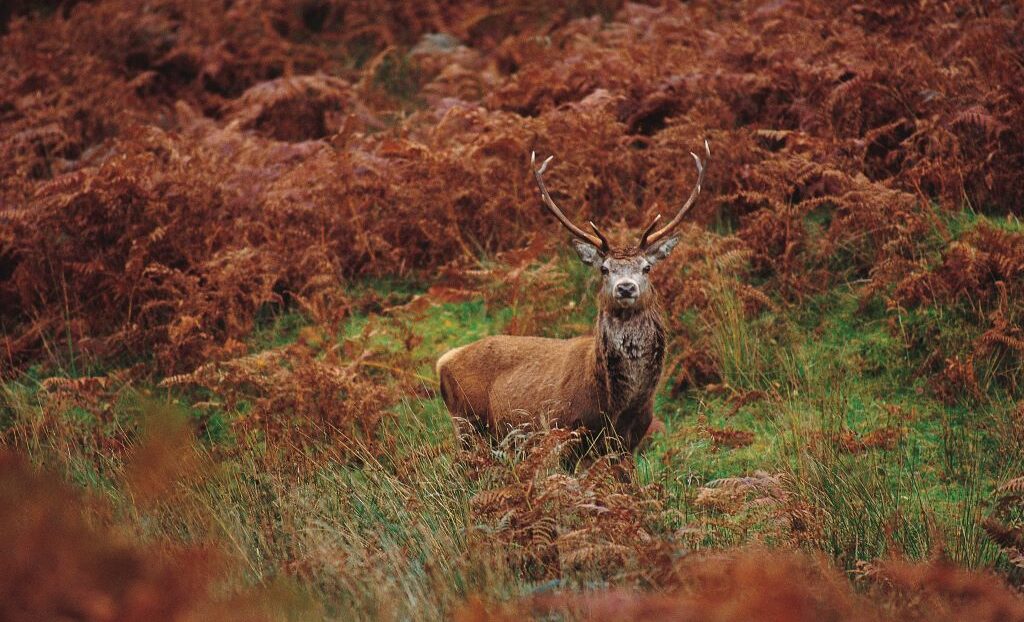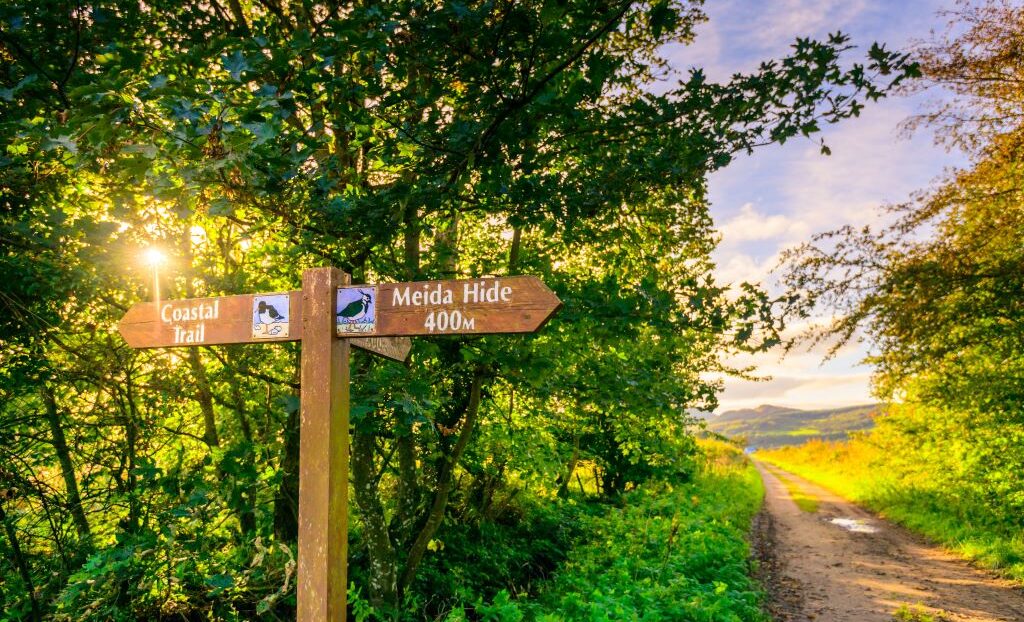Though Scotland is renowned for her beautiful landscapes, what you see today is far from natural. We look at the changing face of our countryside
MORE FROM SCOTLAND MAGAZINE
Scotland’s forests used to cover the entire country. The landscape was dominated by ancient oaks and Scots pines. The more sheltered glens had birch, hazel and cherry trees. Scottish cultural history shows how vital trees once were to the Scots. Gaelic folktales have many stories of trees and forests, and the Gaelic alphabet has a plant to represent each letter. Place names such as Crieff (tree place), Aikenhead (oak area), and Birkenshaw (birch wood), are inspired by trees, yet today, the quintessential image of Scotland is the vast open hills of heather and grass. What happened to Scotland’s forests? And why is rewilding Scotland so important?

Scotland’s ancient Caledonian forests grew at the end of the last Ice Age. When the ice retreated enough for trees to grow, they slowly colonised the land. Anywhere that wasn’t too rocky or wet was once part of a forest where Britain’s native trees flourished. As well as the oak, birch, and rowans, Scotland’s forests also have Scots pine, elm, juniper and native yew among others. Red squirrels could have hopped, skipped and jumped between branches from Glasgow to Aberdeen and beyond without coming down to the ground. The forests were alive with a diverse and vibrant wealth of flora and fauna. Capercaillie (wood grouse) built nests under the shelter of woodland, and red deer rubbed the fur off antlers against rough trunks. But wherever humans go, the forests vanish. Even after the human inhabitants cleared areas for farmland, towns and roads, some survived. In AD82, when Romans invaded Scotland, there were still acres of forests. There’s another creature that is responsible for the loss of Scotland’s forests – sheep.

Sheep farming became big business as the Industrial Revolution picked up steam. It caused changes to the landscape of Scotland, and one of the biggest was the Highland Clearances. Wealthy landowners decided that it would be more profitable to farm sheep than allow traditional crofter families to manage their small farms – which also had lower profits. What resulted was a terrible human tragedy. The Highland Clearances also spelled the end for the remaining areas of natural forest. Trees were cut down to make way for grasslands where sheep grazed amongst the ruins of abandoned crofts. Today, sheep farming is not as profitable as it was, but though sheep numbers have declined, the forests have not returned.

Scotland’s weather became colder and wetter over hundreds of years. Once trees are felled and their roots die, the soil falls apart. The rain erodes the earth and the nutrients in it wash away down burns into the sea. Where forests once grew, peatland now dominates. Today, much of the land that was once forested is so deficient in nutrients and lacking in soil that trees cannot grow. Just as in the deforested Amazon rainforest, areas that once harboured a rich diversity of plant and animal life are almost barren. Grazing deer now munch delicate growing saplings, preventing trees growing where conditions would be perfect for them. When the Scottish tourism industry grew in the Victorian era, images of Scotland were used to encourage people to visit. The familiar hills of heather were described as romantic and naturally beautiful. Yet, although they are a familiar sight today, these open hills devoid of trees are an unnatural result of human activity. Does this matter and why are some people trying to regrow Scotland’s forests?

Time spent in forests has health benefits. Beyond the obvious positives of exercise, studies have shown that time outdoors in nature is beneficial to our mental health too. People are beginning to take note; in 2016, over 10 million visitors enjoyed forests managed by the Forestry Commission, an increase of 12 per cent from 2012.
Charity group Trees for Life explains the benefits of reforestation: “A new Caledonian forest would sequester carbon, reduce flood risk, improve soils, nurture biodiversity, and offer a wonderland for people to explore.” The majority of woodlands are managed to turn a commercial profit. However, most forests in modern Scotland are an unnatural collection of trees from other countries brought across to grow fast timber. One of the commonest is the Sitka spruce from northwest America. Underneath the Sitka there are carpets of dead pine needles; the close-planted trees block out much of the light creating a foreboding landscape where little grows. As a result, these artificial forests are eerily quiet with little animal life. Thankfully, things are changing. Years of research and a better understanding of the vital ecological role forests have in Scotland has led to the planting of commercial forests that create a pleasant environment for both people to enjoy and wildlife to live in. Most timber forests in Scotland grow for about 30 years before being harvested. Woodlands are carefully managed while the trees are growing but still offer walking routes, cycling paths and camping places. Many also have visitor centres and activities to encourage families to visit, making them perfect places for people to enjoy the outdoors.
Scotland’s government is convinced of the economic and health benefits of forests and has pledged to cover 21 per cent of the country with woodlands by 2032. Land needs to be carefully managed to create a more natural forest landscape. The clock cannot be turned back, and new forests still need quick growing trees for timber. Oak and Scots pine saplings are overshadowed by fast growing plants like birch. However, over decades, the slow-growing species become huge trees that will dominate the new forest. It’s a slow process, but this isn’t a forest planted so that we will enjoy its full beauty – it may take years for the ecosystem to stabilise. Although the forests are the natural state for much of Scotland, people have come to love the open hills. So is it right to change them back? It would undoubtedly look different. What is certain is that expanding forests could be beneficial for the environment, create jobs and bring health benefits to people as well as providing homes for Scotland’s iconic wildlife. They will just take time and need help to thrive.
Read more:
MORE FROM SCOTLAND MAGAZINE

SCOTLAND MAGAZINE
Published six times a year, every issue of Scotland showcases its stunning landscapes and natural beauty, and delves deep into Scottish history. From mysterious clans and famous Scots (both past and present), to the hidden histories of the country’s greatest castles and houses, Scotland‘s pages brim with the soul and secrets of the country.
Scotland magazine captures the spirit of this wild and wonderful nation, explores its history and heritage and recommends great places to visit, so you feel at home here, wherever you are in the world.